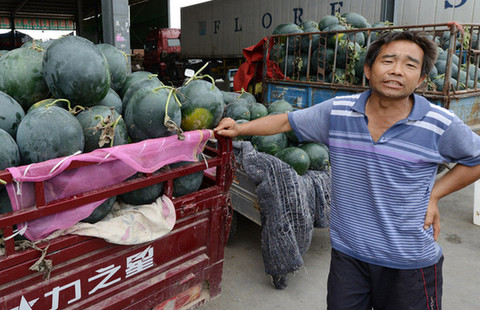Granaries to get a facelift as grain output rises
By Zhao Yinan in Zhuzhou, Hunan and Zhong Nan in Beijing (China Daily) Updated: 2014-07-05 06:40China will increase the size of its granaries as its grain output rises and also take steps to reduce losses from substandard grain storage facilities, as part of the ongoing efforts to bolster food security.
|
 |
 |
During a trip to Zhuzhou, Hunan province, on Friday, Premier Li Keqiang urged China Grain Reserves Corp, the country's largest and most wide-ranging grain storage and transportation company, to work on more options to improve its rice rotation mechanism and reduce storage of expired rice.
Li said grain reserve companies should make more room for new grain by selling old stocks and conduct special inspections to ensure that all the national granaries are efficiently used for storing grain.
To maintain the balance in supply and demand of staples, the government plans to build new storage facilities that can store 50 million metric tons of grain in 2014 and 2015 in grain-producting regions, especially in the country's northeastern and southern provinces.
The government is also encouraging the construction of storage buildings with drying facilities by farmer cooperatives and major specialized farming households in the main grain-producing areas.
Wang Zhimin, a professor at the Beijing-based China Agricultural University, said about one-third of China's stored grain reserves is expired or in poor condition and more than 20 million tons of grain is wasted every year.
China's grain output rose 2.1 percent year-on-year to 602 million tons in 2013, marking the 10th consecutive year of growth. It also purchased 13.98 million tons of grain from overseas markets last year.
"A majority of farmers in China still do not have advanced tools and facilities to maintain their grain in good quality before it can be transported to the marketplace or State reserve facilities," said Wang.
China spent 221 billion yuan ($36 billion) in the past two years to purchase corn from domestic and international markets to shore up its grain reserves. It currently has 100 million tons of corn in reserve. China National Grain and Oils Information Center predicted in June that this figure is likely to reach 150 million tons in October after the harvest season this year.
- Audi reports record H1 sales in China
- Facebook leases office in Beijing with eye on long-term prospects
- Testing times ahead for stores in Hong Kong
- Event to chart green path for growth
- Vintage car displayed in auto museum in Harbin
- Chinese dairy firms catch private equity fancy
- Granaries to get a facelift as grain output rises
- Draft delisting rules provide more options

















